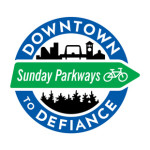![]() You may remember (if you’re of a certain age) the old “Schoolhouse Rock” video that explained how a bill becomes a law. It’s a long road with a lot of steps that you learn about in the abstract in a high school civics class before you’re eligible to vote or required to pay much in the way of taxes (unless you’re a naturalized citizen who studies the process as an adult), so you might be excused for losing track of some of the details.
You may remember (if you’re of a certain age) the old “Schoolhouse Rock” video that explained how a bill becomes a law. It’s a long road with a lot of steps that you learn about in the abstract in a high school civics class before you’re eligible to vote or required to pay much in the way of taxes (unless you’re a naturalized citizen who studies the process as an adult), so you might be excused for losing track of some of the details.
I got to live through civics as an Idaho state legislator years ago and be part of the sausage-making. In fact, as a freshman in the House I voted for a bill that provided almost exactly the same local control that’s in the Neighborhood Safe Streets Bill.
At the Bicycle Alliance we pay a lot of attention to those details that Schoolhouse Rock didn’t really dig into: Why the timing is right for a particular change in policy. The language of the bill. Who will be interested in its effects. Who might want to support the bill because it helps achieve their goals. This kind of attention to detail has led to our success in the legislature–we’ve been prime movers behind the majority of bike-friendly legislation passed in the last 25 years.
All this work happens well before the legislative session. When a bill goes into the hopper, though, things speed up. We start out in first gear and then quickly shift to higher gears and pedal faster.
Our Neighborhood Safe Streets Bill, which empowers cities and towns to lower the speed limit to 20 mph without requiring an engineering study, hit first gear on Tuesday of this week when it had its first hearing of the 2013 session in the House Transportation Committee chaired by Rep. Judy Clibborn (D-41).
HB 1045 was presented by staff and then by its prime sponsor, Rep. Cindy Ryu (D-32). The bill passed the House unanimously in the two previous legislative sessions but ran out of time in the Senate and now has to start all over again.
The bill has been voted out of committee with a “Do Pass” recommendation. It has more steps to go through and a companion bill on the Senate side, SB 5066, is up for a hearing in the Senate Transportation Committee Tuesday, Jan. 29, where its prime sponsor is Sen. Andy Billig (D-3). We’ll keep you posted on the legislative process even if we don’t have a catchy jingle to help you remember all the steps.
- Official HB 1045 information page: Updated after each action taken on the bill
- Official SB 5066 information page
- Our Action Alert on the bill–time to get in touch with your senators the way you did with your state representatives and ask their support for SB 5066
- Manual on Uniform Traffic Control Devices, for those who are deeply interested in definitions of arterials, non-arterials, and other traffic guidelines
Selected quotes from TVW’s coverage (shown above):
Rep. Judy Clibborn, commenting on the fiscal note presented by staff:
“To be clear, we’re talking about a decrease in costs for cities and towns.”
Rep. Cindy Ryu:
“It’s really a safety tool in the local government toolbox because it offers an important tool for both public and roadway safety. It can be accompanied with additional engineering and design to create safe neighborhood streets for all residents, particularly children and the elderly. …
“The bill does not mandate any changes to speed limits; it simply provides cities and towns the local control to do so. It is expected to be used within the priorities and planning contained already in a city or a town’s transportation plan to help improve safety on selected neighborhood streets or corridors. It only applies to non-arterial streets, which are clearly outlined in our street classification hierarchies.”
Peggy Quann, AARP volunteer speaking on behalf of AARP Washington’s support for the bill:
“Research shows that older pedestrians are more likely to be seriously or fatality injured at lower vehicle speeds than younger people. Pedestrian safety measures will benefit all ages—young and old—and are particularly important to older adults who will always be at higher risk.
“In Washington State, people 65+ are 12% of the population but victims in 26% of fatal pedestrian crashes. In 2010, 62 pedestrians were killed and 16 were over the age of 65. Safe, walkable streets are important both for safety and lifestyle reasons, and especially important for the many older adults who can no longer drive.
“Older people who feel safe walking to their local library or senior center will live healthier, more enriched lives and avoid social isolation.”
Victor Colman, Director, Childhood Obesity Prevention Coalition
“We’re really trying to make the healthy choice the easy choice where we live, work, learn, and play. We too feel this bill is part of a bigger solution to a couple of different issues: safety and health….
“No surprise, we’re still in a pretty “red-alert” situation with regard to obesity statistics…. Treating the outcomes of overweight and obesity, as you may imagine, is expensive, but also preventable. So we need all the support we can get from all sectors in our society to make healthy choices easier. The health field cannot solve this problem by itself. We need to work with land use, transportation, and many other sectors….. This bill is part of the obesity prevention toolbox.”
Some of my testimony, speaking on behalf of the Bicycle Alliance:
“I’m in the unique position of asking you to vote for a bill that I had the chance to vote for years ago in a different state. I served in the Idaho state legislature in both the House and Senate and we had pretty much the exact same language come.
“It was the same issue–that local governments didn’t have the authority to lower the speed limit in what was essentially a residential neighborhood because it was defined by the state…. It really affected the livability, the property value, and the safety of those neighborhoods.”



